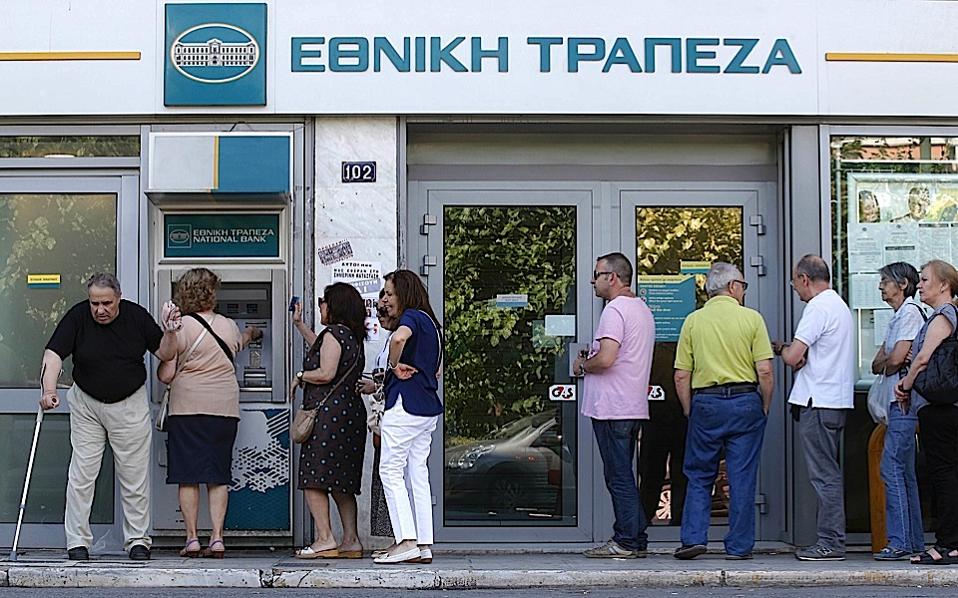Capital controls – the new QE

While the policy of building walls to keep people from entering a country has become more prevalent, what is rarely discussed in the mainstream financial media is the prospect of another type of wall: a financial wall, prohibiting savers and investors from transferring, repatriating, or even using their capital. Capital controls are now reappearing as a “macroprudential” tool, aimed at addressing global crises.
Mainstream economics has shifted its stance toward capital controls several times. In the post-World War II order, the Bretton Woods system, capital controls played an integral role in a heavily regulated financial system. These restrictions facilitated an acute reduction in sovereign debt ratios, mainly through negative real interest rates. In the late 1970s, free market economics came to displace the Bretton Woods system. Capital controls became a taboo issue among economists and policymakers; the new paradigm of capital and labor mobility became the new norm. With four decades of “globalization,” global growth accelerated exponentially, international trade flourished and poverty rates decreased significantly. However, it also resulted in ever-increasing public and private debts, deindustrialization in developed economies and gaps in wealth distribution.
Emerging market economies soon implemented the capital account liberalization trend, attracting vast inflows of capital and creating a credit bubbles. In the 1997 Asian crisis, this bubble would burst and the International Monetary Fund, following the era’s orthodoxy, would require even more concessions on capital account liberalization. This would be later heavily criticized, as the countries that kept some form of capital controls in place (China, India and Malaysia) were left largely unscathed. While emerging market investors were familiar with the tail risks of capital controls, it was unusual to witness a developed market closing itself from the rest of the world. Ten years later, Iceland would impose strict capital controls to weather its banking crisis.
After the 2008 crisis, the prevailing orthodoxy was once again challenged, as many policymakers spoke in support of restrictive measures. The dire situation led to heavy criticism toward the belief of the neoliberal narrative, while policymakers seized the occasion to introduce extreme Neo-Keynesian policies. Iceland was the first country to introduce capital controls after the collapse of its banking system as a “temporary measure.” It was only after nine years that the Icelandic government lifted these restrictions.
The setup for the eurozone crisis was very familiar to emerging market investors. Countries with free flow of capital and fixed exchange rates would have to sacrifice monetary policy sovereignty, what economists call the “irreconcilable trinity.” The weakest periphery members would have to suffer tight monetary conditions to remain in the currency zone. Fears over a potential exit from the zone were translated to an acute deposit flight from the periphery’s banks to the core. With Germany running balance of payments surpluses vis-a-vis the periphery, the Bundesbank accumulated claims against the central banks of the periphery, all accounted in the Target 2 clearing payment system in the European Central Bank. The Target 2 amounts are still staggering: Germany has an asset of 754.3 billion euros, mostly owed by Spain (328.1 billion euros) and Italy (356.6 billion euros). Hence, as is quipped, it is impossible to leave the euro – because euros leave you. That was the case in both Cyprus and Greece, imposing severe capital controls (in contrast to the monetary union rules) in order to protect their ailing financial systems.
The substantial public and private debt overhangs created in the aftermath of the 2008 crisis still pose a major threat for the global economy. The initial thought (or hope) that future growth would bring leverage ratios lower proved to be naive. On the other hand, countries that tried to reduce their debts through fiscal austerity, such as Greece, experienced a wave of political unrest and economic stagnation that only perpetuated the problem. The only remaining options to bring down debt to GDP ratios is either through a burst of unexpected inflation or through imposing heavy regulation to create captive domestic audiences for government lending, combined with a mild dose of inflation (what is known as “financial repression”). While the latter options might sound more appealing it is worth noting that they can only be pursued by countries that have mostly domestic debt.
Financial repression is a term coined by the Stanford economists Edward Shaw and Ronald McKinnon, and relates to policies under which the government transfers wealth from the private to the public sector, by generating cheap funding for the government. The mechanism is fairly straightforward: Artificially low nominal interest rates, accompanied by a mild dose of inflation, will erode the real value of government debt. The main policies to achieve this are capital account restrictions and foreign exchange controls to create an internal “captive” market for domestic debt, caps or ceilings on interest rates and/or direct ownership / heavy regulation on the banking system.
The failed paradigm of austerity, Greece, provides some insights about how financial repression policies might be implemented. Greek debt, although a member of a currency union, imposed strict controls to avoid deposit outflows. That created a captive market for savers, and Greek corporates started issuing debt targeted at these trapped domestic investors. Even micro-caps tapped markets at rates below the sovereign (in some cases 150 basis points inside the Greek government debt). International capital market access for Greek corporates is still unattainable; hence projects are funded locally. Eventually, local investors, like sitting ducks, are forced both practically and legally to invest in low yielding domestic government debt. These capital controls are also already occurring by stealth in other Western countries as evidenced in the difficulty in opening foreign bank accounts for many nationals. As the policy of quantitive easing (QE) unwinds, capital controls will be more necessary to achieve a reduction in real debt levels.
Given the rise of inward-looking and panicked politicians around the globe and the monetary policy extremes after the 2008 crisis, a financial repression via blanket capital control regime could be the policy response to the next crisis. In this process, the global financial system would be totally fragmented, while wealth would be transferred from the private sector to the government. Investors could be caught by surprise; liquidity would evaporate in an instance, with devastating effects for asset prices. In this new paradigm shift, capital mobility will become a thing of the past.
* Jason Manolopoulos is the co-founder of Dromeus Capital and author of “Greece’s ‘Odious’ Debt.”





